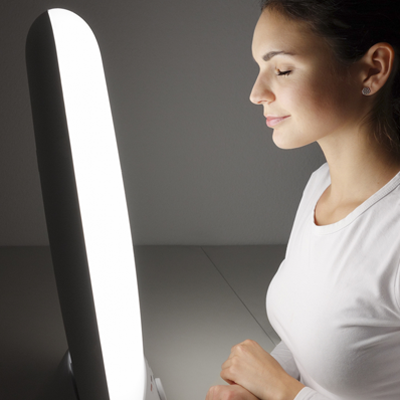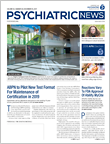Mood stabilizers such as lithium or valproate are known to be effective at controlling manic symptoms associated with bipolar disorder, but many patients continue to experience residual depressive symptoms while on these medications. Antidepressants are an option, but studies suggest that they are not as effective for bipolar depression as unipolar depression.
A
study published October 3 in
AJP in Advance suggests that adjunctive midday light therapy may lower depressive symptoms in people with bipolar disorder without increasing the risk of having mania reemerge.
Lead author Dorothy Sit, M.D., an associate professor of psychiatry and behavioral sciences at Northwestern University Feinberg School of Medicine, told Psychiatric News that her group had initially planned to evaluate the effects of morning light (the time typically used when treating unipolar depression) on patients with bipolar disorder, but three of the four participants in their pilot study developed hypomania.
After consulting with experts in light therapy and reviewing the available literature, the researchers decided to evaluate the effects of midday light exposure on patients with bipolar disorder.
For this six-week study, 46 adults with bipolar I or II disorder, who had elevated depressive symptoms, randomly received either a 7,000-lux bright white light unit or a 50-lux dim red light machine. They were instructed to use their light machine once daily between 12:00 p.m. and 2:30 p.m., starting at 15 minutes per session and increasing by 15 minutes each week to a target duration of 60 minutes daily. The participants all remained on a mood stabilizer, and some were also taking an adjunctive antidepressant.
As Sit explained, this was a different approach to light therapy: “Studies normally start at the full light duration, but we modeled our protocol after medication studies where the dose is gradually escalated,” she said. The goal was to build up the participants’ tolerance to the light and further decrease the risk of hypomania or other side effects like headaches.
After six weeks, patients treated with bright white light therapy had lower average scores on their SIGH-ADS (Structured Interview Guide for the Hamilton Depression Scale With Atypical Depression Supplement) than those using the dim red light—9.2 versus 14.9, respectively. The bright light group also showed a significantly higher remission rate (achieving a SIGH-ADS score of 8 or less) than the control group—68.2 percent compared with 22.2 percent, respectively.
The observed improvements in the bright light group were first evident after about four weeks, which Sit said is the same as seen in other light therapy studies. “It is encouraging that we were able to achieve this robust response even though we took measures to optimize tolerability,” she said.
Both groups experienced minimal side effects, and there were no instances of mood switching during the study.
While Sit noted that more research is needed to understand how the timing of light therapy affects depression and the long-term effects of the therapy, she believes light therapy is an option for outpatient clinicians who treat bipolar patients. She said that she believes light therapy could be an especially attractive option to manage depressive symptoms in special populations like older adults or pregnant women with bipolar disorder, where there are greater risks in using multiple medications.
This study was supported by awards from the National Institute of Mental Health and the Brain and Behavioral Research Foundation. Uplift Technologies Inc. donated the light boxes used in the study. ■

